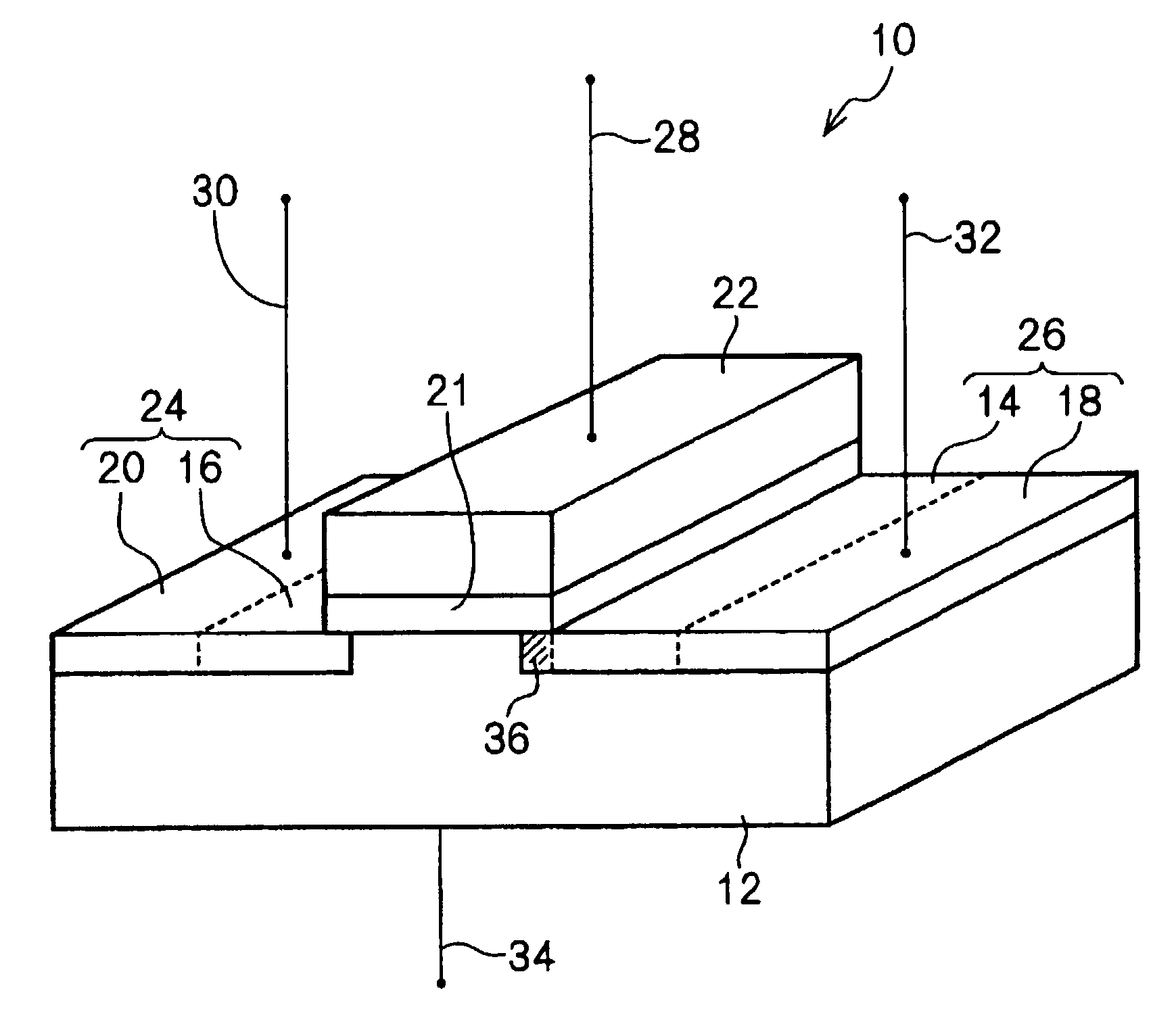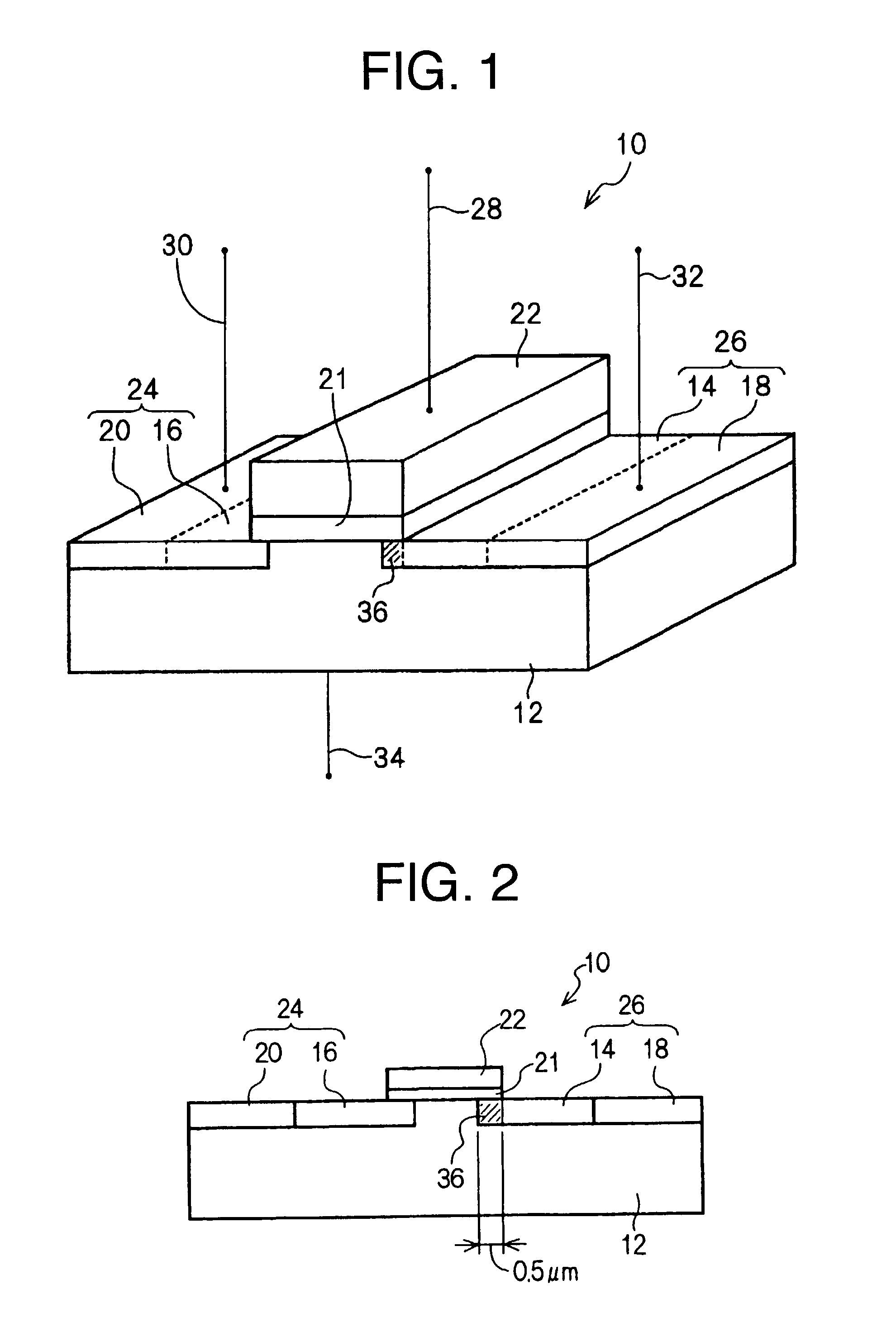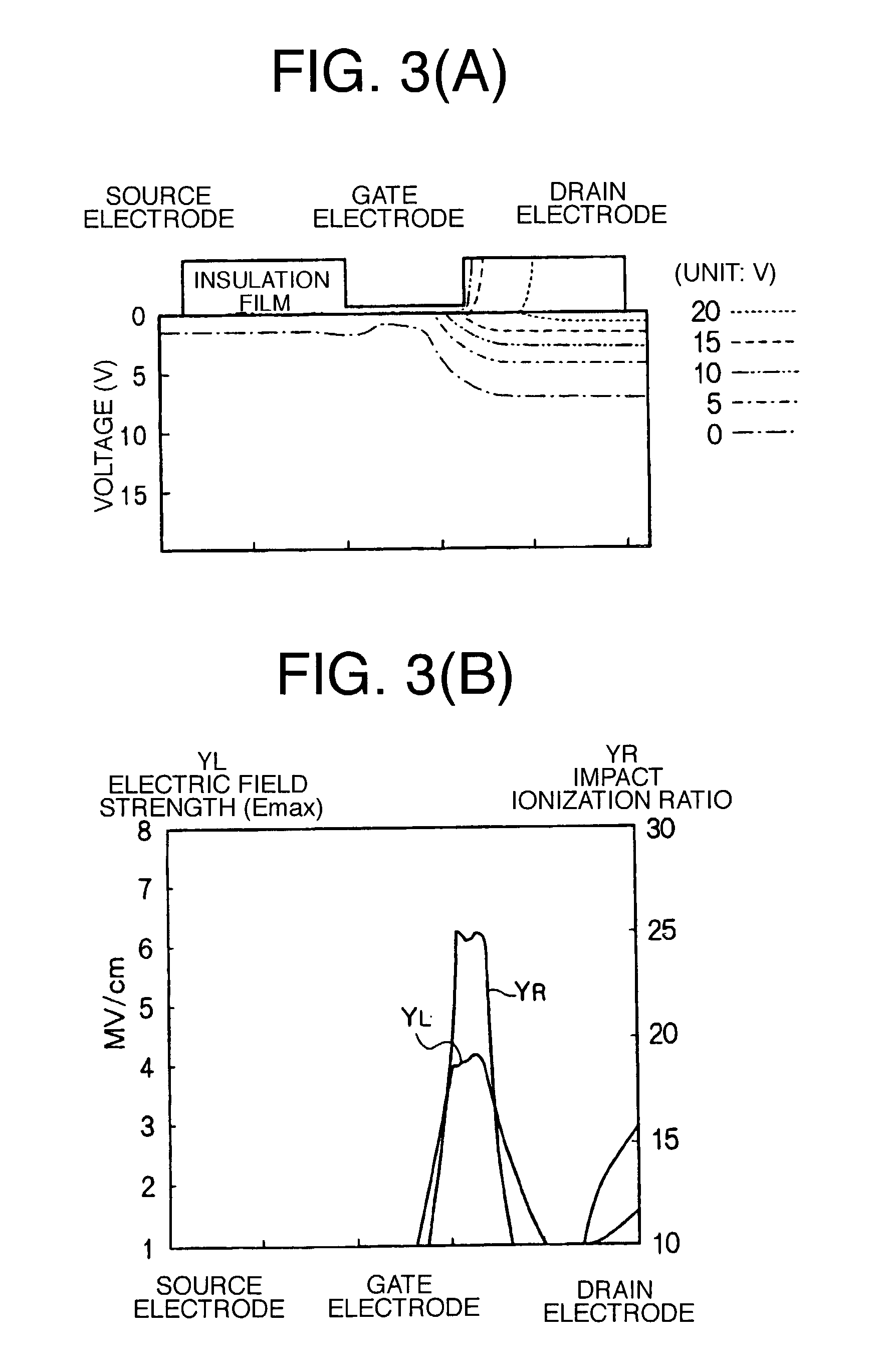High-voltage MOS transistor
a high-voltage mos, transistor technology, applied in the direction of basic electric elements, electrical equipment, semiconductor devices, etc., can solve the problems of short actual service life of the transistor and the inability to sacrifice the driving capacity of the transistor itself, so as to achieve the effect of reducing the peak value and sufficient lifetime of the hot carrier
- Summary
- Abstract
- Description
- Claims
- Application Information
AI Technical Summary
Benefits of technology
Problems solved by technology
Method used
Image
Examples
first embodiment
[0037]FIGS. 1 and 2 show an n-channel high-voltage MOS transistor 10 according to the invention. The n-channel high-voltage MOS transistor 10 comprises a p-type silicon semiconductor substrate 12, a pair of symmetrical n-type regions (lightly doped n-type diffusion layers 14, 16, and heavily doped n-type diffusion layers 18, 20 to be described later), disposed in close proximity of a surface (upper surface) of the substrate 12, a gate insulation film 21 provided on the surface of the substrate 12, between the n-type regions, and a gate electrode 22 provided on top of the gate insulation film 21.
[0038]The gate electrode 22 on the p-type silicon semiconductor substrate 12 is made of polysilicon, and the gate insulation film 21 is made up of a gate oxide film.
[0039]With the present embodiment, the gate insulation film 21 is first formed, and subsequently, a mask for forming the lightly doped n-type diffusion layers 14, 16 as first diffusion layers is formed on the gate insulation film ...
second embodiment
[0058]The second embodiment is characterized in that there is provided a relative difference in dopant dose between a surface layer side of a lightly doped n-type diffusion layer 14 and an intermediate layer region thereof.
[0059]More specifically, FIG. 7 is a dose distribution profile at the sectional face taken on line VII—VII of FIG. 6, and as shown in FIG. 7, the dopant dose gradually increases from the surface layer side of the lightly doped n-type diffusion layer 14 towards a p-type silicon semiconductor substrate 12, and reaches a peak in the intermediate layer region, declining towards the back side thereof, that is, on the p-type silicon semiconductor substrate 12 side.
[0060]It is shown that the dopant dose on the surface layer side is 4 E 17 cm−3, and the dopant dose of the intermediate layer (at a position 0.12 μm from the surface layer face), reaching the peak, is 7 E 17 cm−3. In forming the lightly doped n-type diffusion layer 14 described above, a highly doped region is...
PUM
 Login to View More
Login to View More Abstract
Description
Claims
Application Information
 Login to View More
Login to View More - R&D
- Intellectual Property
- Life Sciences
- Materials
- Tech Scout
- Unparalleled Data Quality
- Higher Quality Content
- 60% Fewer Hallucinations
Browse by: Latest US Patents, China's latest patents, Technical Efficacy Thesaurus, Application Domain, Technology Topic, Popular Technical Reports.
© 2025 PatSnap. All rights reserved.Legal|Privacy policy|Modern Slavery Act Transparency Statement|Sitemap|About US| Contact US: help@patsnap.com



